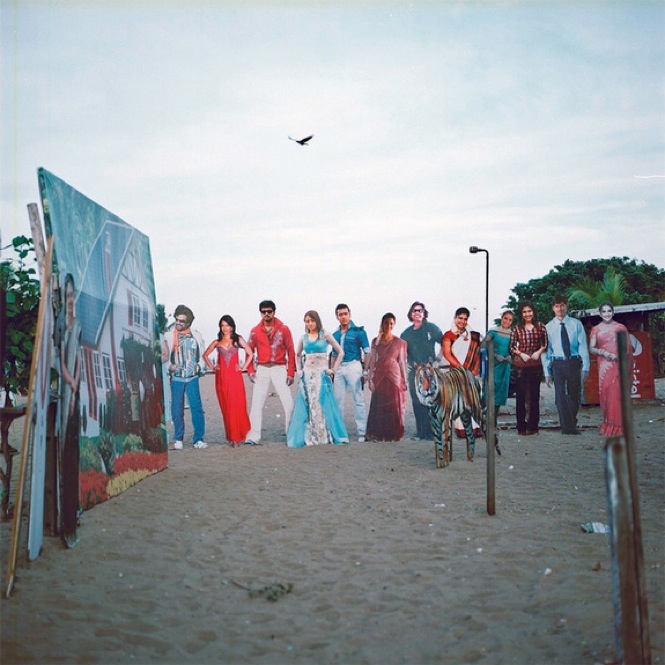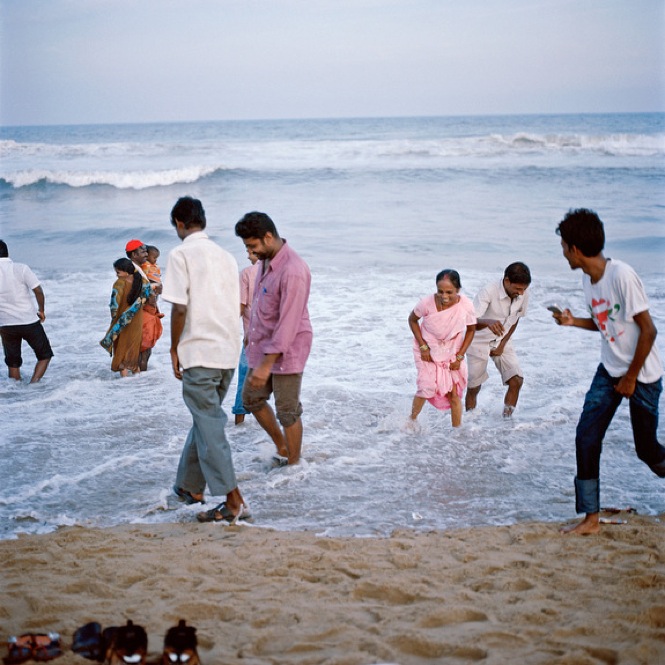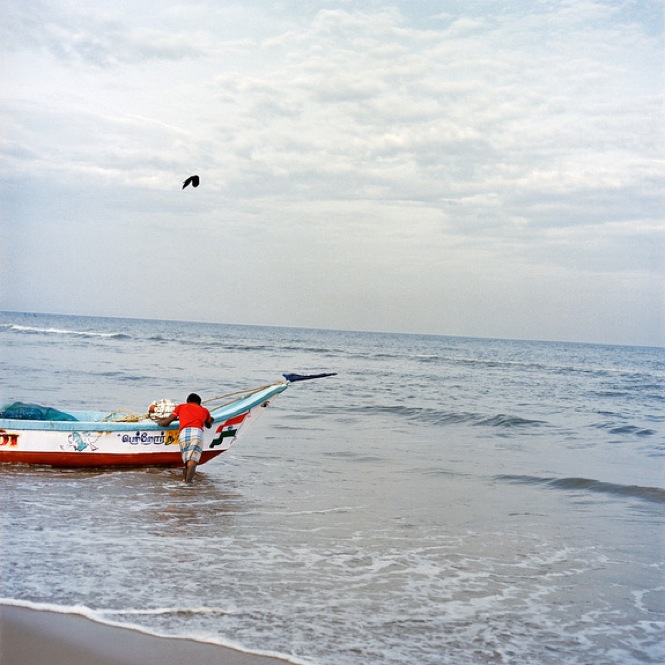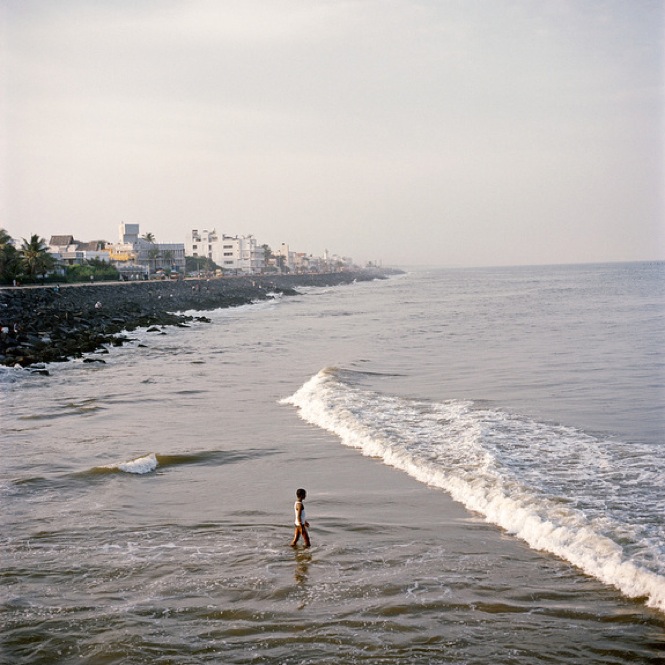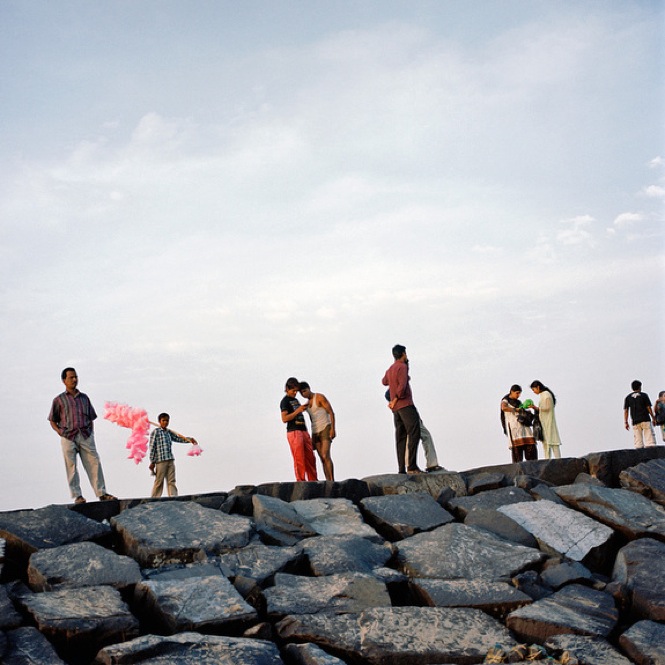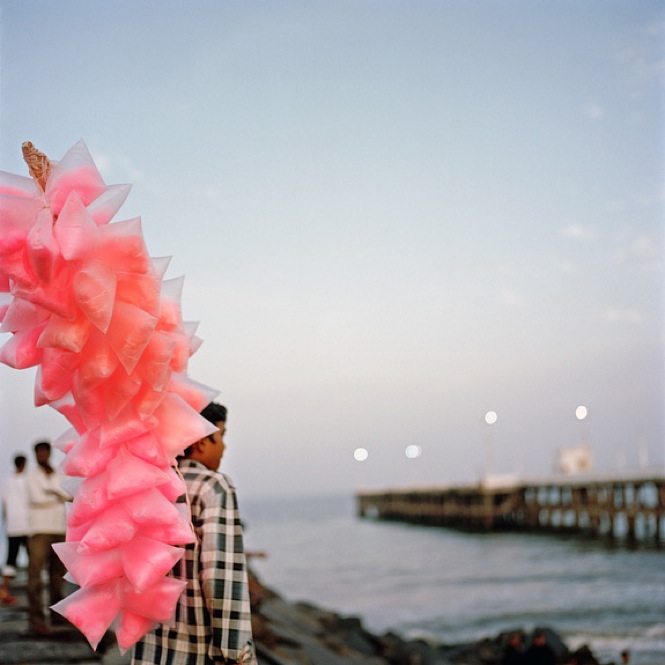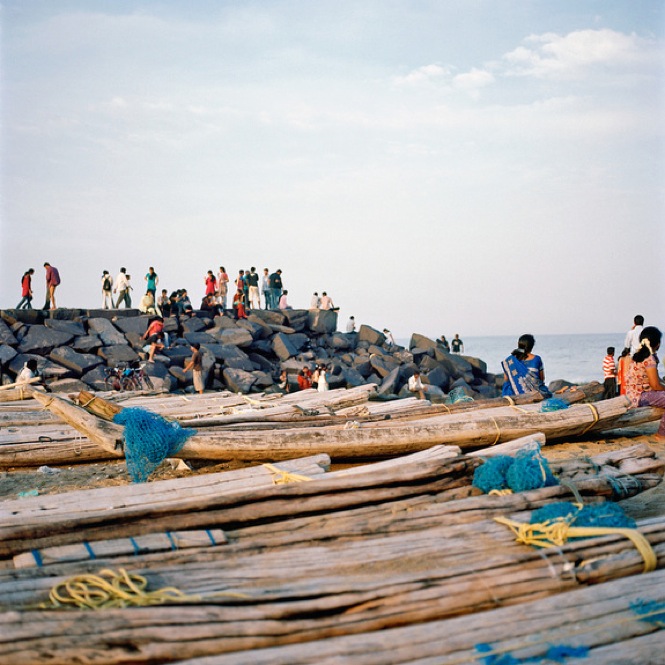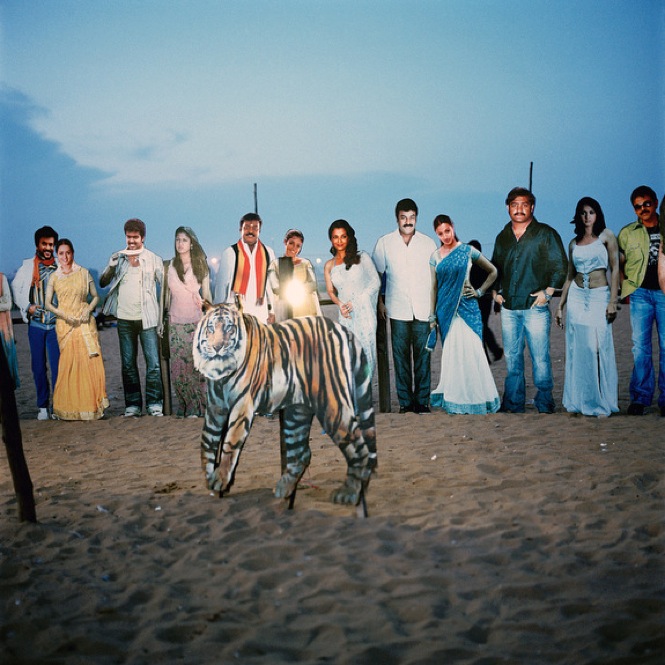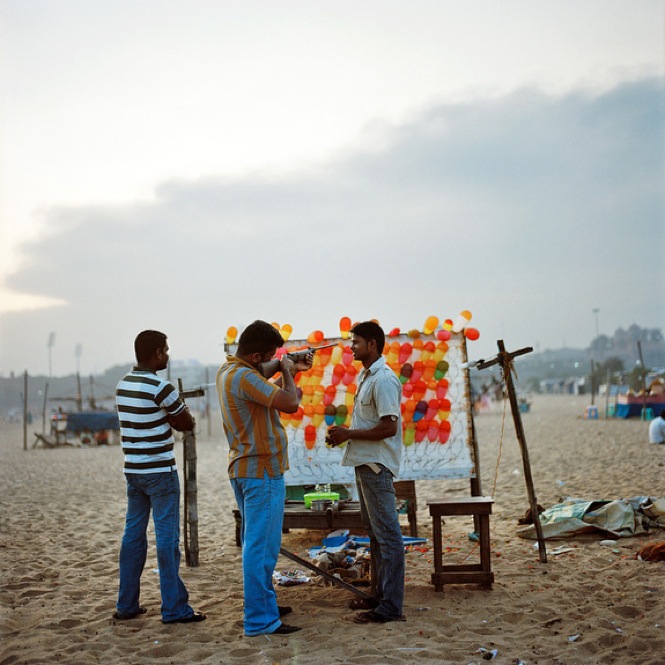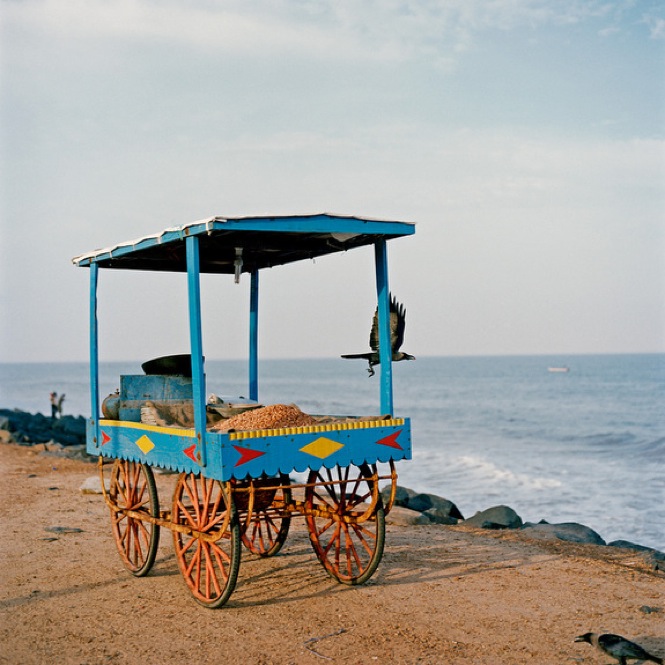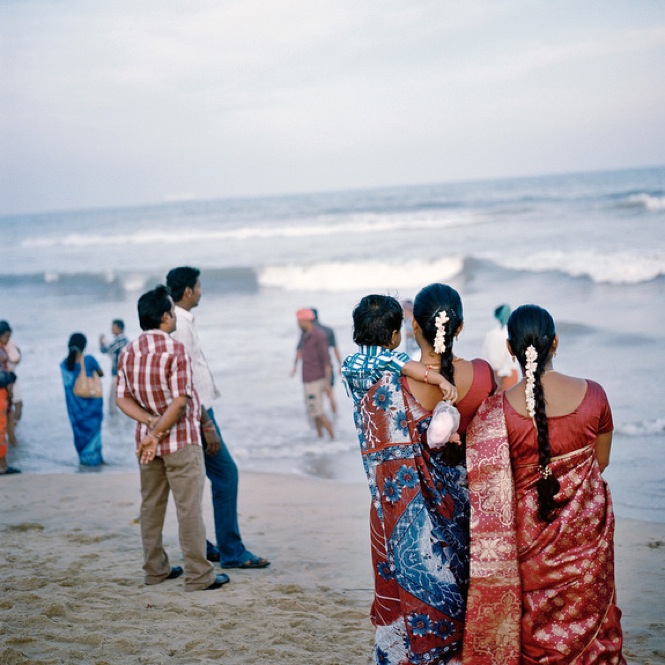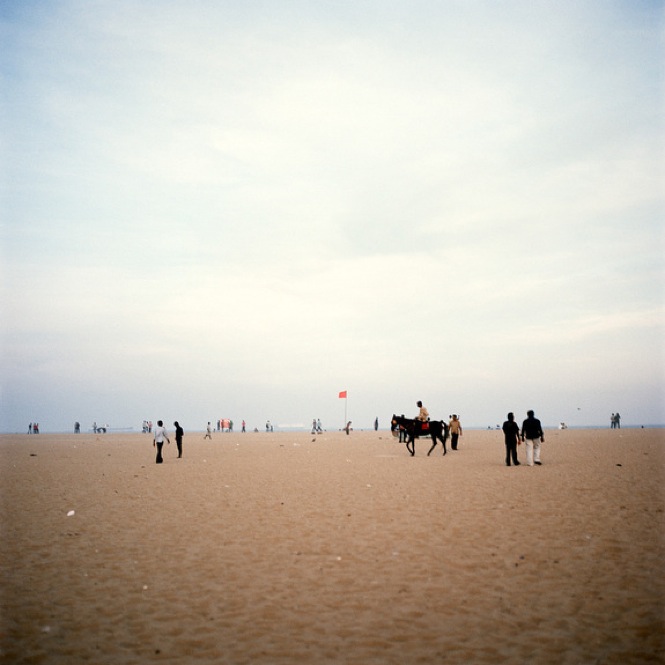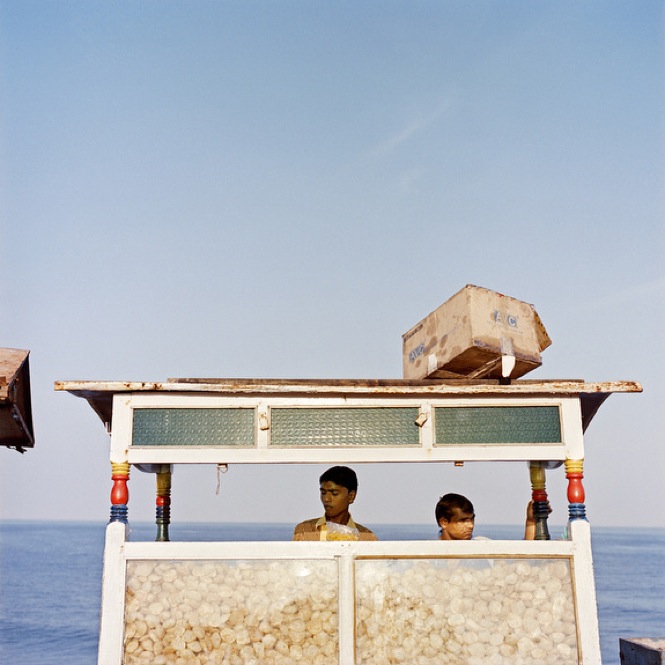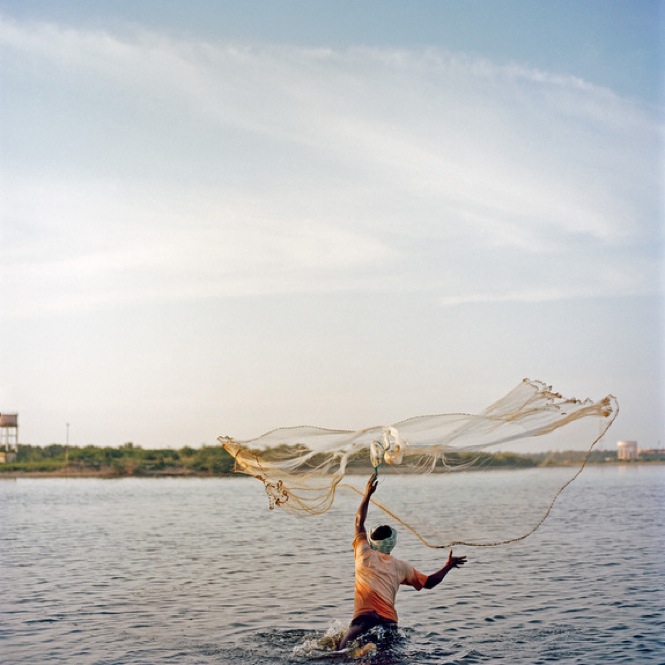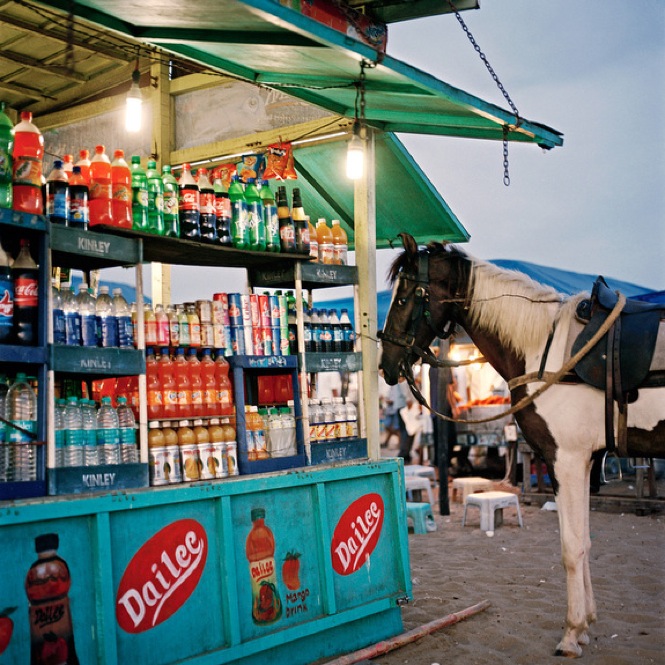In October of last year, we featured photographs by Candace Feit of a fishing community in southern India. Below, Feit talks to Glenna Gordon about expanding the project, looking for peace in chaos, and the lives of artisanal fishermen.
Guernica: Can you tell me a little bit about these images?
Candace Feit: This body of work was made in September 2011 on the south Indian coast in Tamil Nadu. In India, where personal space is often limited, being close to the sea promotes a different set of relationships for people who gather to use this public space—both for individuals and groups.
This work explores the loneliness and isolation that can be the result of the constant stimulation of the world around us: the noise and heat, the demands of family, friends and work—and that isolation in the face of the sea.
I watched as people gathered by the seafront. Surrounding them there was a constant buzz of vendors, cotton candy sellers, fortune tellers—all of which gave it a feeling of a frenzied carnival.
The relationships were layered: there were solitary cotton candy sellers and groups of families running part-way into the sea while others looked on, a cart with peanuts for sale which were being carried off by crows. All of these things were existing in the same place, and occasionally overlapping.
Through these photos I try to explore the idea that while things in these environments are loud and dirty, almost never tidy—that it is still possible to find moments of peace. And, as an extension, in these moments of peace there is often a sense separateness or solitude. Using the moments of stillness I find in each of these scenes, I try to bring order to the often overwhelming surroundings.
Guernica: How is this work different from your other work in Tamil Nadu?
Candace Feit: I photographed the first set of images from Tamil Nadu over several weeks in August-September 2010. I had an artist residency near Pondicherry and went down there with the idea to do something involving the fishing villages surrounding Pondi. I realized almost immediately that what I kept looking at and finding interesting was not necessarily the act of fishing but rather all of the physical objects that were connected to the lives of the artisanal fishermen there—anything from the nets, boats, beach shacks, to the environment. After editing that work and spending time with it, I realized that I wanted to go back to Tamil Nadu and explore more. I knew I was going to be leaving India at the end of the year, so my window was closing. I made another trip almost exactly a year after my first visit.
The new work is still centered around the sea but the focus has shifted to understanding the sea as a something that’s used for both leisure and work—mostly unrelated to lives of artisanal fishermen. In this case the “work” encompasses all of the structures and people around the sea—the cotton candy seller, the food vendors, the tourists, the morning joggers. Being close to the sea, in this case, promotes this whole other kind of life that has nothing to do with fishing.
Much of the work also deals with the loneliness and isolation of the sea—a theme that was hinted at in the earlier Tamil Nadu work, but which I feel like is a lot more obvious in this series.
I started the trip at Marina Beach in Chennai—which is said to be one of the longest beaches in the world. There was something really fascinating about the place—watching all of the families clustered together, with their shoes off running back and forth into the surf. It seemed like they were both fascinated and terrified and so it kind of brought out this exhilarated giddiness. And surrounding that there were vendors selling photos of people posed with Bollywood stars, small beach games, and people offering horse rides—all of which felt like some kind of carnival mash-up. I carried the feeling from Marina beach to the smaller beachfront in Pondicherry and tried to re-explore many of the beaches I went to the year before but with this new outlook.
Guernica: Why did you shift your focus? Or do you think of it less as a shift and more of a continuum?
Candace Feit: It’s a bit of both. The sea is still the same and much of the geography is the same. But the subject matter has shifted, and it also feels like a bit of the palette and the mood has shifted. In both bodies of work I try to explore the idea that while things in these environments are loud and dirty, it is still possible to find moments of peace.
Guernica: Both bodies of work are about loneliness of the sea, but both explore that idea in different ways. Does one inform the other?
Candace Feit: I do think the first body of work from Tamil Nadu has definitely informed the more recent one. After I got the film back and began going through it, all of the work seemed very different. I couldn’t really mentally rectify them as an ongoing project or even necessarily as being from the same place. But the more I sat with the images, the more I began to see the similar themes between them, and the way I felt about the sea as I was making the work, and the relationships of very different groups to this particular place and this particular body of water.
Guernica: When you’re thinking about expanding a project, is this something you do decisively and with pre-meditation, or is it more of a process where the results surprise you as well?
Candace Feit: Yes and no. I definitely wanted to expand the project and I had some ideas of where I thought it might go on a return trip. When I landed in Chennai and went to Marina Beach, I realized right away that the leisure life around the sea was completely captivating. And that while I had started to explore that in my first trip, it hadn’t really made it into the edits and I hadn’t really fleshed the ideas out.
With the first group of pictures I edited them over a long period of time. Right after I finished in Tamil Nadu, I wound up spending over four months outside of India, which was unplanned. I had the film at home but beyond looking through it and scanning a few images, I hadn’t really thought about it very much. After I returned to India, I started really editing it, scanning the images and figuring out how they fit together. It felt like a very organic process for me—if only because it happened over months and months. For the return trip I had less time in every way—less time photographing and less time editing—so in some ways the results definitely surprised me in this case. I had no idea what to expect, except that I knew I wanted to go back and make more work there.

